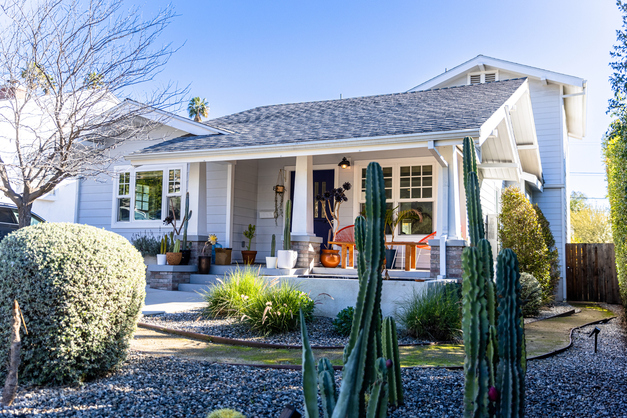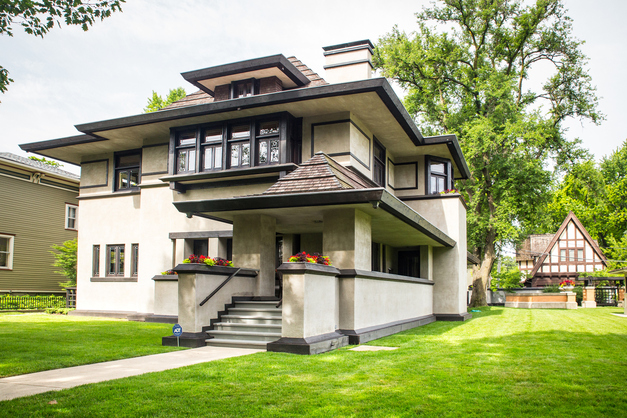In the first entry of this blog series, we explored Medieval styles of architecture with Ancient Roman influences and neoclassical designs with an Industrial Revolution twist. In this entry, we’re going to take a closer look at some American architectural home styles and how homeowners can incorporate them into the floor plans of their custom homes.
American Craftsman
American Craftsman is an Arts and Crafts inspired style of architecture that was popular in the early 20th century in the United States. It takes its name from the magazine The Craftsman, which was a popular design and arts publication at the time, founded by furniture designer, Gustav Stickley. The Craftsman style was, in many ways, as much of an architectural style as it was a social movement. It was a rebuke of the socioeconomic divides created by America’s Gilded Age, a departure from the clutter and faux-sophistication of the Victorian Era and, above all, an ennobling and empowering symbol for the burgeoning American middle class.
Most homeowners today would recognize the single-family homes of the Craftsman style that were popular in much of southern California from 1905 to 1930. These “California bungalows” have become, in many ways, ubiquitous with the American middle class and its associated traditional values—it’s almost required to have an American flag proudly mounted on the front porch.
As an architectural design aesthetic, American Craftsman is an evolution or off-shoot of the Shingle style and the Prairie style, pioneered and popularized by Frank Lloyd Wright. It is characterized most frequently by its distinctive square columns, large front porches, gabled roofs, 4-over-1 or 6-over-1 windows, mixed materials, sturdy construction and, of course, excellent craftsmanship. Homeowners who want to incorporate elements of the American Craftsman style of architecture into their dream home can adopt the tapered square columns, decorative brackets and large front porch for irresistible curb appeal that harkens back to a simpler time.
American Empire Style
American Empire is less an architectural style and more of furniture and interior design aesthetic. Nevertheless, it influenced the direction of architecture in the United States and can add an air of distinction and power to contemporary homes.
The Empire Style originated in France in 1800 during the First French Empire under the rule of Napoleon Bonaparte. From an architectural standpoint, the Empire Style is almost indistinguishable from the Neoclassical style of architecture except, perhaps, for its more literal incorporation of symbols reminiscent of the Roman Empire. The Empire Style found its way to American shores around 1815 where it became popular with an emerging class of American elites who would, in the following decades, usher in America’s Gilded Age.
[Image]
American Empire Style furniture was ornate, heavy, bulky and comprised of expensive materials, much like the Neoclassical architecture that inspired it. Given that the design was intended to convey wealth and power, common materials included dark-stained hardwoods, gold leaf, velvet and marble. Furniture designers included laurel wreaths and scrolls as hardware and urns, vases, sphinxes, columns and muses as decoration. The Red Room of the White House (pictured above) is indicative of the American Empire Style of furniture.
Homeowners can add an air of dignity and distinguishment to their home’s interior with American Empire Style furniture. Even subtler homages to this era of fine craftsmanship, such as marble table tops and gold leaf motifs, can augment contemporary styles of furniture and work well in modern, open-concept floor plans.
American Foursquare (also American Four Square)
The American Foursquare style home was popular throughout the American Midwest between the 1890s and 1930s. As the name suggests, the design was essentially a box—or a square—with a hipped roof and little ornamentation. Much like the American Craftsman movement, the Foursquare was a departure from the ornate and inauthentic design elements of Victorian homes and other Revival architecture. Some architects might refer to this period of American residential architecture in the Midwest as the Transitional Period, but that is not to say that it isn’t without its merits or distinct style of its own.
For the most post, Foursquare homes all followed the same general floor plan with four square or slightly rectangular rooms on the main floor and a centralized staircase and bathroom on the second floor with three or four surrounding bedrooms. These homes had an attic space that was either one large room or two rooms and a basement that housed a furnace or boiler. The square design of the house and its rooms along with a second storey and attic space allowed homeowners in the “streetcar suburbs” to maximize the square footage of their smaller lots. Towards the end of the Foursquare era, mail-order homes—complete with pre-fabricated, pre-cut and numbered parts along with instructions for self-assembly—became popular.
Architect Frank Lloyd Wright experimented with the Foursquare design—the Robert M. Lamp House is a notable example of his efforts. To further maximize the interior square footage, Wright removed the dividing walls, thusly creating a precursor to the modern open floor plan.
Quite apart from its boxy shape, Foursquare architecture had other distinguishing characteristics including one to four-centred dormers, a wide staircase leading to a large front porch, arched entryways between interior rooms and, later on, open floor plans and fireplaces.
As contemporary custom home builders seek to move further away from the “cookie-cutter” house, they might overlook some of the benefits afforded by the economy of this American architectural phenomenon. Today, custom builders with limited lot sizes can borrow from the American Foursquare style of architecture without sacrificing originality. A wide front staircase with a centred dormer adds both balance and beauty to the exterior of a home while an attic surrounded by four dormers creates a bright living space.
More Architecture to Come
We’ve only just scratched the surface of American architecture with these three distinct styles—nevertheless, we have the urge to don the red, white, and blue. The next instalment in this blog series will take us from the Antebellum South to Ancient Egypt. In the meantime, check out our blog for more great architecture and design ideas.


